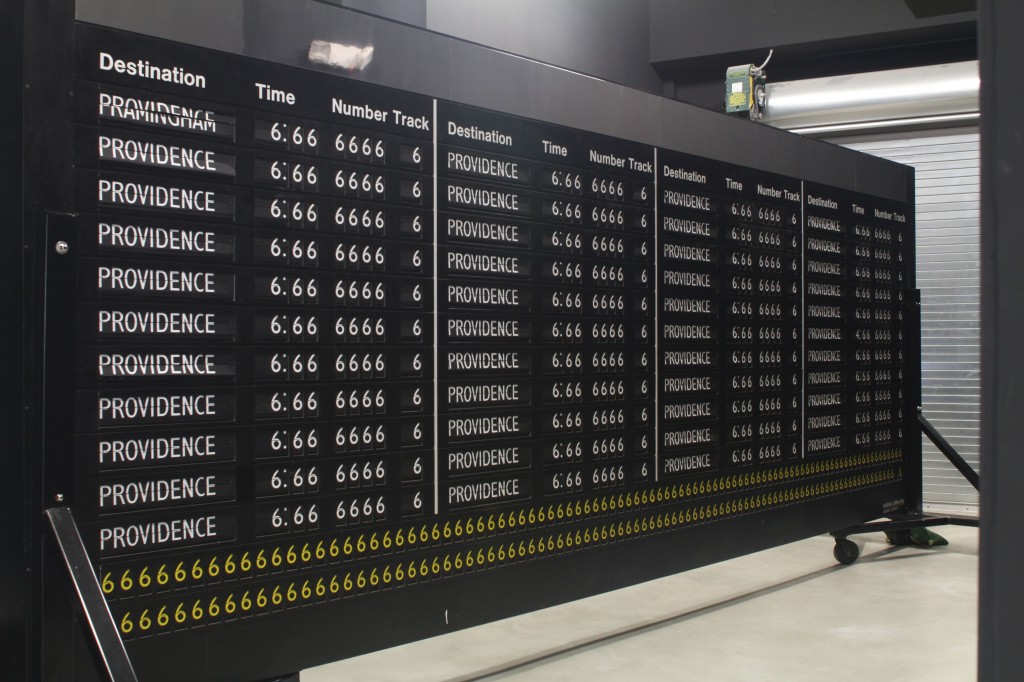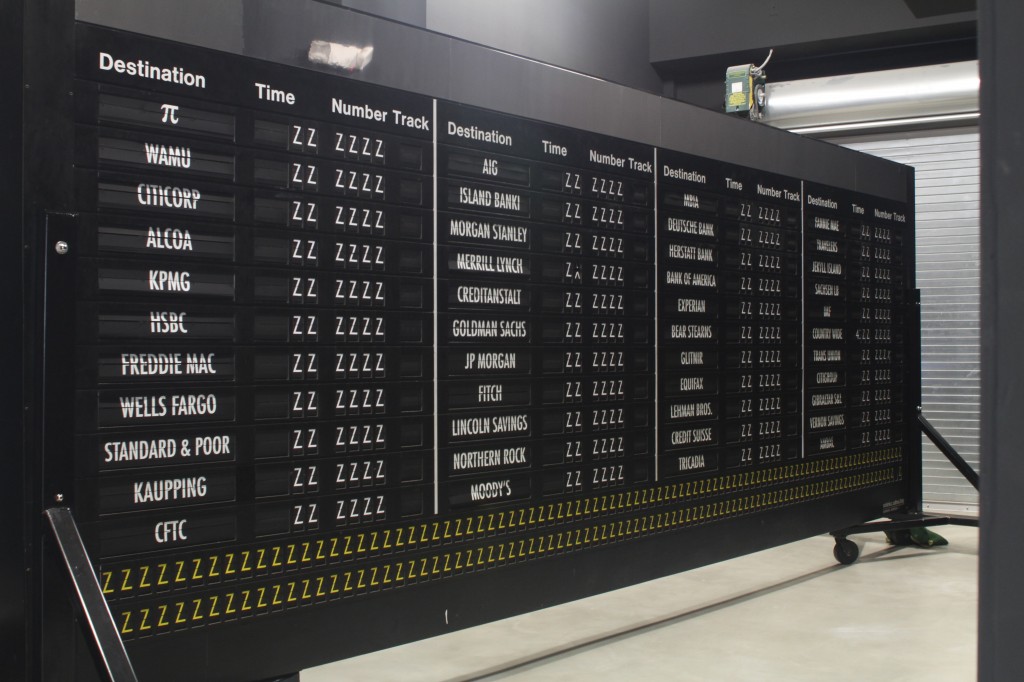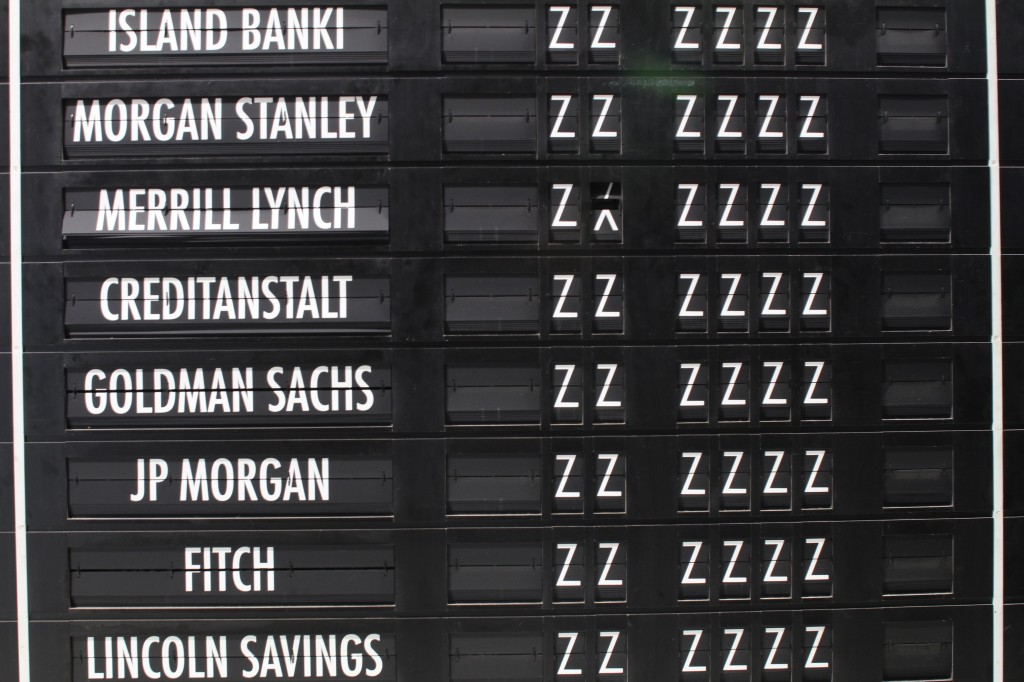
In art, the end of the analog age
Last March, the “New York Times” lamented in a commentary from David Pogue the demise of the sounds of the analog age. That scratching of a record as the needle leaves the vinyl, signaling the end of an album; the fast forward/rewind screeching zip-zip of a tape; the busy tone of a telephone; the “ka-ching” of a cash register. For the most part, none exist anymore.
So it’s the sound when entering George Sanchez-Calderon’s installation room at the de la Cruz Collection that feels the most immediate: it’s the click, click, click, flip, flip, flip of a train station sign changing times and destinations. The sound emanates from a real, giant Solari train station mechanism and is immediately recognizable to anyone (as in most of the world) who has traveled on trains. It is immediately identifiable as old-fashioned. The aural and visual aspect of the piece is also immediately nostalgic. Today, there are similar signs in airports, flashing updated times and gates, prompting a rush to new exit points — but they are silent. The digital age has left us mute without these telltale cues, which once became synonymous with “Modernism” and are now dated. Funny, isn’t it? Sanchez-Calderon, whose quirky and engaging works have invigorated the Miami landscape for years, played with the idea of Modernism— its contradictions and its after effects — on a number of previous occasions. For instance, he erected an 80-percent-scale version of Le Corbusier’s classic Modernist house under a freeway overpass in Overtown, which stood for several years back in the early 2000s. On the one hand, here was a representative of “progress” as the Modern age once heralded, sitting in one of the most decrepit and neglected areas of any modern city in the world. As an artist, he is interested in both the literal and metaphorical architecture of our current era.
For his latest installation, called “The Family of Man” (a name appropriated from a mid-century MOMA exhibit from Edward Steichen), the big black-and-white sign flips and clicks, to tell us a new destination, a new time. On opening night, it included lots of repetitions of places, such as Providence (R.I.), and the same times, such as 6:66. Then, names of our corporate masters took the place of the “destination:” Wells Fargo, Merrill Lynch, Moody’s. Where, indeed, are we going? “I began to look for and found a Solari sign in early 2009, shortly after the September market crash of ’08,” says Sanchez-Calderon about the inspiration. “An analog device that marked this transition, a marker of sorts for Modernism.” The work will change throughout the month or so that it is up. “It only gets better,” says the artist.
“The Family of Man” site-specific installation, through Oct. 8, at the de la Cruz Collection, 23 N.E. 41st St., Miami; www.delacruzcollection.org.
Recent Content
-
Artsarticle ·
-
Artsarticle ·
-
Artsarticle ·


